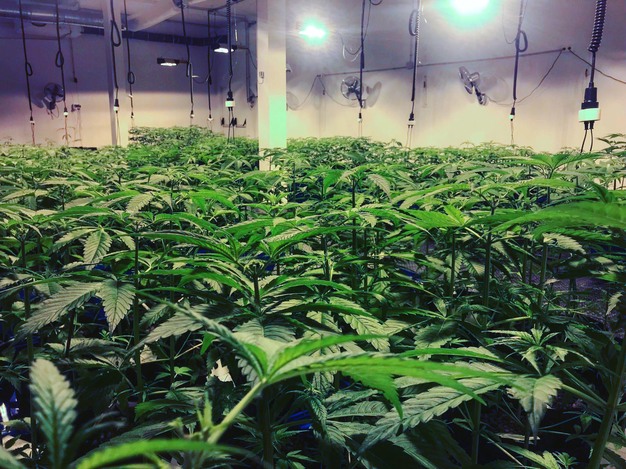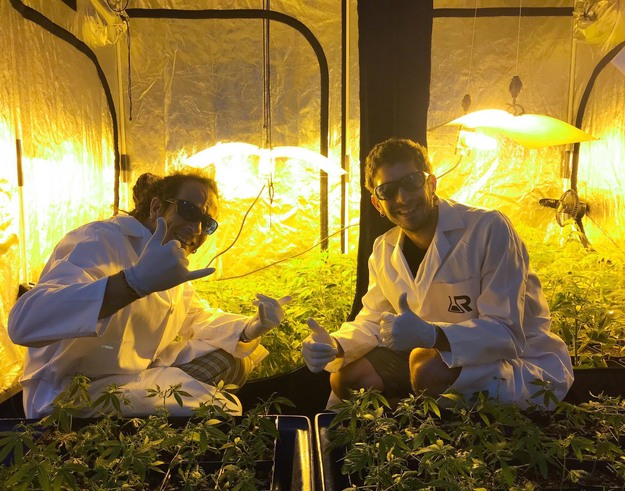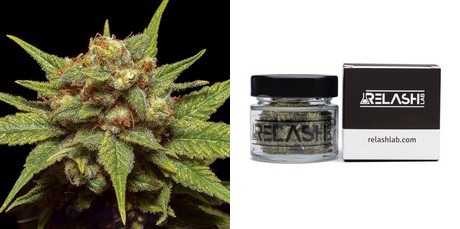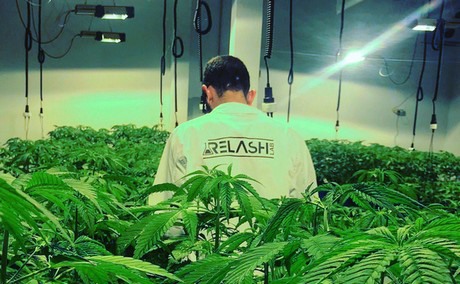Now that Croptober is over, growers are in the middle of drying their cannabis. Some tend to overlook this process, but truth is, carrying this out properly can mean the difference between high quality flowers and low-quality ones. There are different theories and techniques for drying cannabis flowers. Davide Agostini, grower with Relash Lab, takes care to explain some of them. “This is actually the most important phase,” says he. “You can be very good at growing, but if you don’t dry and tan the flowers properly, then the whole batch could be wasted.”
Starting with the right foot
“Before getting to the actual drying, there are a few things to consider,” he points out. “For instance, a few days before the harvesting, some growers stop feeding fertilizers to plants in order to reduce the concentration of salt in the roots. At the same time, it is possible to wash the roots with osmosis-treated water in order to keep the organoleptic properties of the flower, and prevent the buds from having a ‘mineral’ taste. These are just ‘shrewd’ processes that can greatly improve the end quality of the flowers. With this being said, washing the roots is the most important thing.”

Davide is very much aware that there are different secrets and theories about this last part of the harvesting. “Another secret, which is a theory, in fact, is to leave the plant in the dark 24 hours before the harvesting. This way, the plant produces more resin,” he explains. “At the same time, to achieve the same result, one could lower the temperature of the grow room, even in a kind of extreme way, down to 16 degrees. By doing this, the plant would start producing more resin as a defense mechanism against the cold. You can witness this in nature as well: cannabis plants that are originating from mountain areas, like Tibet for instance, are full of resin.”
Key rules for drying
And thus, it is time to start the drying process. “First of all, growers should have set up a drying room,” he points out. “There are key rules to take into consideration for this type of room. Firstly, it needs to be in full darkness. This is because of the sunlight, the UVA rays, oxidize and trap the chlorophyll within the flower, instead of letting it out. Secondly, in theory, temperatures should be around 18-23 degrees. Then, humidity should oscillate between 48% and 58%. When the room is all set up, growers can go on harvesting. If a drying room complies with these standards, everything will be a lot easier.”

At this point, it is time to trim the plant. “I prefer to carry out this process cold,” he points out. “You need to remove the leaves from the plant, especially the bigger ones. You want to prevent humidity sockets from being created: this could happen in the lower part of the branches, for instance.”
When a plant is cut, the stomata close and the plant stops ‘breathing’. However, fluids within the plant keep moving, which helps to spread substances. “This is one of the reasons why you hang the flowers ‘head-down,” Davide explains. “They need to stay in this position for 2-3 days in order to get rid of most of the water content. Another way of doing this is to separate all the flowers and place them on a net with thin nails, in order to give them more space and airflow.”
The last stages
“I think that the slower the drying, the better it is. If a grower has planned everything carefully and all the parameters are under control, slow drying is a more natural process. There is no oxidative stress, and there is no loss on the organoleptic side. However, after a couple of weeks, the flowers should be dry, and it is time for the tanning.”
The tanning of cannabis consists of putting flowers within a jar, “preferably made of glass,” Davide points out. “Through the tanning, flowers will keep losing humidity, though in a milder way. Humidity within the flower should sit between 11-14%, because this would make it almost impossible for mold or fungi to spread, thus making the product safer, especially from a medical standpoint.”

Davide continues explaining that the jars filled with flowers need to be checked daily, “and you also need to open them for, say, 5 minutes. This process of tanning, and daily openings, could last up to one month. Depending on a grower’s experience and on the results one wants to get, it is possible to tell if the tanning process is over.”
A standard for drying
Once this is done, Davide suggests conducting relative humidity tests: “In this way, it is possible to standardize the procedure. Carrying out all of the described processes means to pay extreme attention to the smallest details, which eventually ensures a product of an incredibly high quality.”
The last part of this operation is the preservation. “Since cannabis flowers are an organic product, the best way to preserve them is in vacuum-sealed bags,” Davide says. “The best would actually be to vacuum seal the jars with the flowers, and put them into a fridge with temperatures around 8-10 degrees.”

However, there are still a lot of things to learn about the cannabis plant. “We are just at the inception of this industry,” Davide remarks. “There are many things to learn, especially with regards to better promoting the different compounds within the plant. As of now, the only way to find better procedures, is to investigate, to do tests and trials, and see the reaction and the evolution of the plants’ organoleptic properties.”
For more information:
Relhash Lab
+34 697 847 445
info@relashlab.com
relashlab.com
